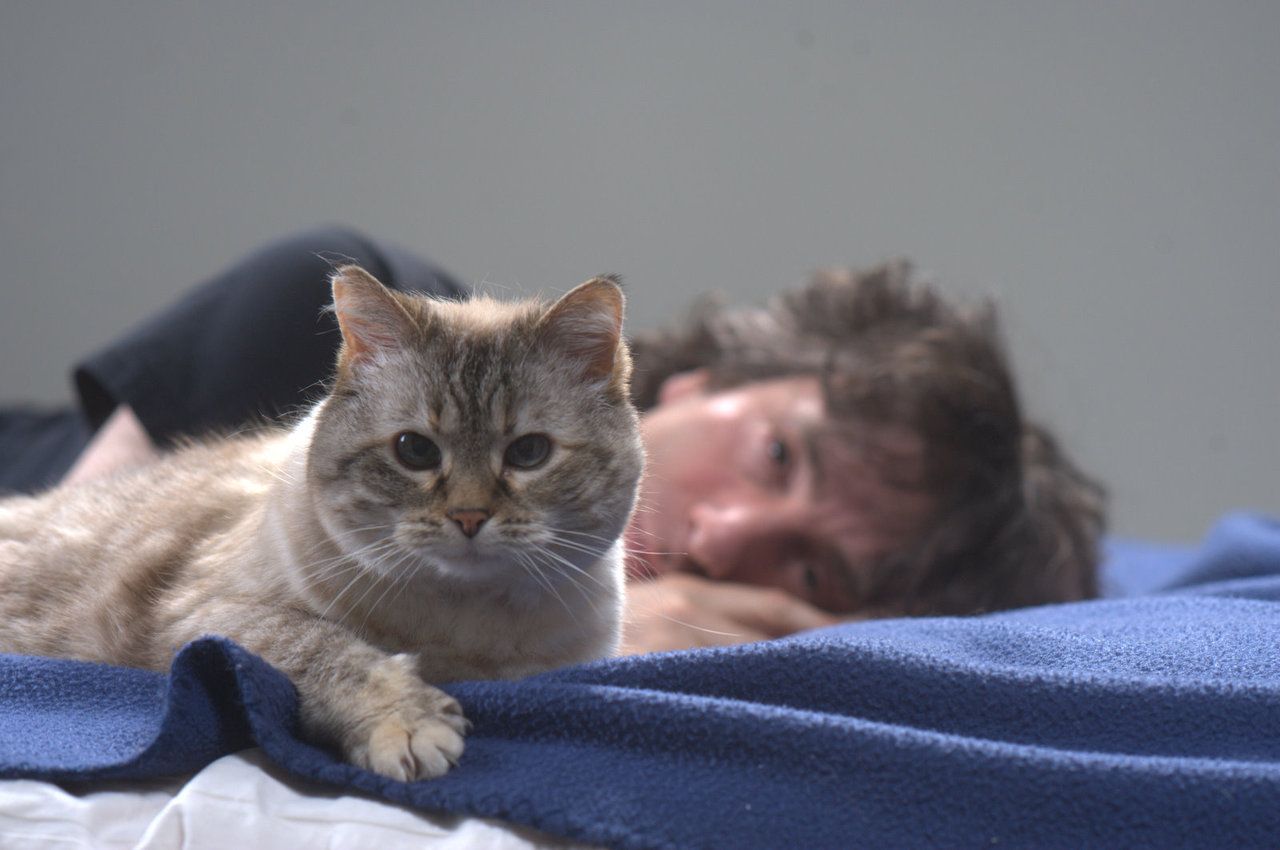By Maria-Nefeli Andredaki,
Spooky season is officially in full swing and everyone is slowly putting their costumes together while shopping for pumpkin decor and sipping on some hot cocoa. It is exactly at this time of year when many readers allow themselves to fully indulge in the Halloween spirit through books about witches, haunted mansions, ghosts, and all things that might induce a shiver or two.
Known for his innumerable stories and highly creative imagination, Neil Gaiman is undoubtedly one of the best-known fiction authors of our generation and certainly one of the most loved during Halloween. While many of his popular books are being adapted into successful TV shows and plays, bringing even more attention to his talent and brilliance as we speak, I wanted to shed light on something I have not seen many people talk about; his love for cats! Proud owner of seven cats, Neil Gaiman has a habit of sprinkling these majestic feline creatures throughout his stories, some of which often play a critical role in how the story develops.
Before we take a look at a few of them, let’s set the record straight on what cats often symbolize in literature. During the Ancient times, in many cultures, cats were usually associated with the gods and goddesses of the moon and of hunting. Their predatory and nocturnal nature conflated them with these gods, who sometimes even took the form of a cat themselves. The Middle Ages brought on a more evil view of cats, especially black cats, by associating them with witches (or at least whatever the men of that time saw as witches). In later literary pieces, cats are usually portrayed as free, independent spirits, often sneaky and vigilant creatures looking out for themselves and their own. Thankfully, most modern literary pieces do not fall into the stereotype of portraying cats as evil and/or selfish.
But how does Neil Gaiman show his appreciation for cats in his works? Let me preface this by giving a brief warning to readers who are sensitive to spoilers, as I will touch on the roles that feline characters undertake in the stories “Coraline”, “The Ocean at the End of the Lane” and “Sandman”.
Coraline is considered by many to be Neil Gaiman’s most popular book and the black “haughty” cat is- without a doubt- one of the most important characters in the story, only second to Coraline herself, as it helps her get through some very tricky situations. From the start of the book, the cat seems mysterious and unapproachable, avoiding Coraline’s affection. Slowly, however, the cat approaches Coraline and presents itself as a fluent English speaker. It refrains from answering most of her questions while seeming to have extensive knowledge of the “other mother” and her realm, making it look like an ancient, all-knowing spirit that has taken the form of a cat. The furry creature becomes Coraline’s companion during her adventures and helps her save herself from the dangerous world of the “other mother”, again, kind of like a protective spirit or guardian angel looking out for our protagonist. It seems like black cats are not that evil, right?

Another memorable Gaiman cat is Ocean, from the book The Ocean at the End of the Lane. Although this kitten has a minor role in the book, it is extremely symbolic, as the cat is found by the narrator after the end of his adventure and it is also closely related to the three witch-like figures, the Hempstocks, that helped save him. At the end of the book, when the narrator visits his old home, Old Mrs. Hempstock and Ocean appear to have stayed exactly as he remembered them, even though years have passed and both of them should be long dead. Ocean represents the spiritual, witchy force that, throughout the book, has been working hard to ward off the evil that has infiltrated the unnamed narrator’s body and life.
Sandman is probably one of Gaiman’s most popular works, especially now that it has been adapted into a Netflix series. Both in the comic and the show, we see Morpheus, the ruler of the dream realm, take the form of a black cat. This, along with the story/episode A Dream of A Thousand Cats, in which an older cat reminisces of a land where felines used to rule their empire and dominate the human species, creates a connection between felines and spiritual, godly powers.
I think it is safe to assume that Neil Gaiman has a soft spot in his heart for these awe-inspiring creatures, as he wouldn’t have given them such pivotal roles in the lives of his main characters if this weren’t the case. I always get giddy when I pick up a new Gaiman book, waiting to meet the new cat that will more or less save the universe once again. But hey, even if you’re not a huge fan of cats, you might want to stay for the incredible world-building and intriguing characters. Besides, they’re best-sellers for a reason!
References
- Neil Gaiman, Coraline (2002), The Ocean at the End of the Lane (2013), The Sandman (January 1989–March 1996)
- The Curious Symbolism of Cats in Literature and Art. Available here




